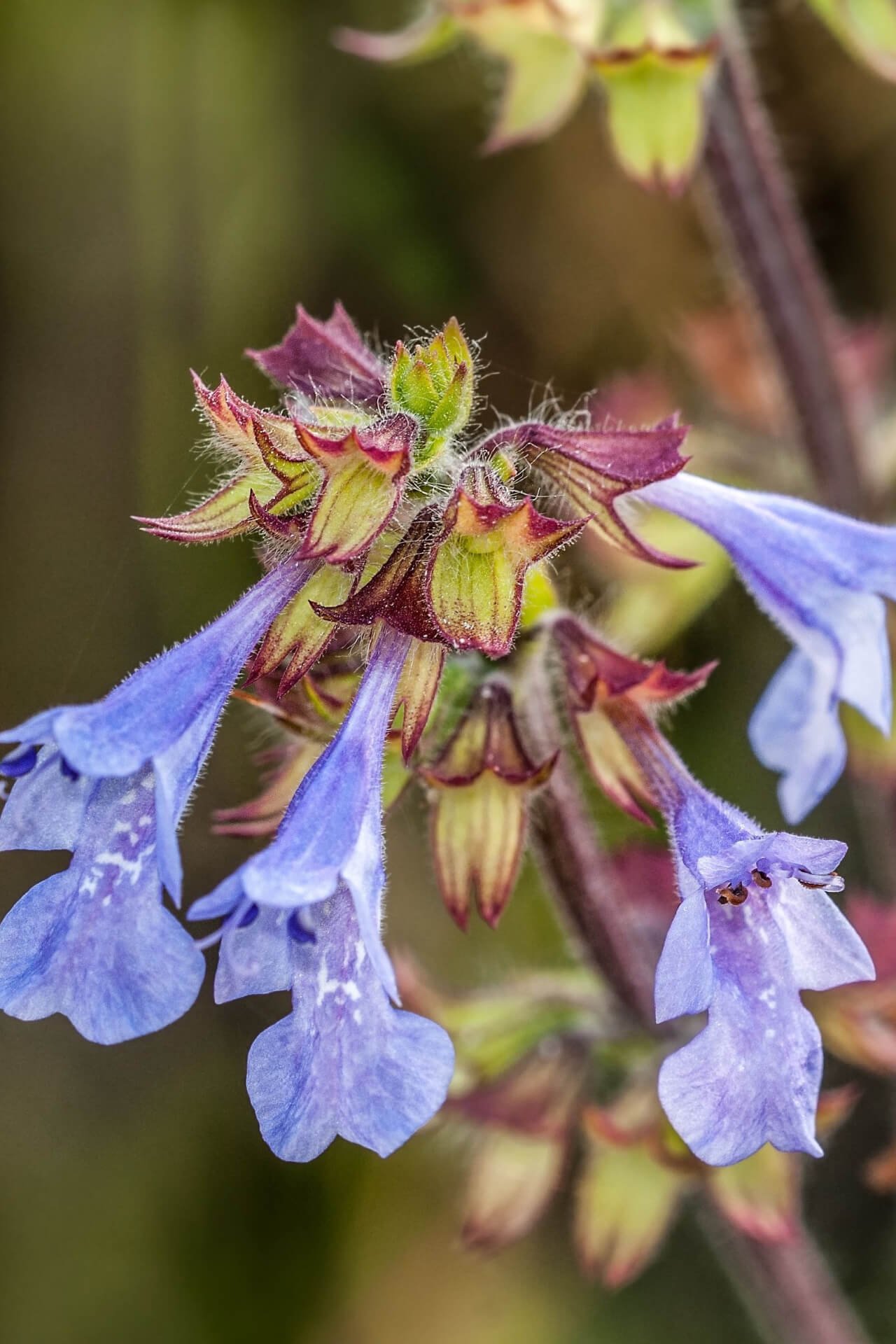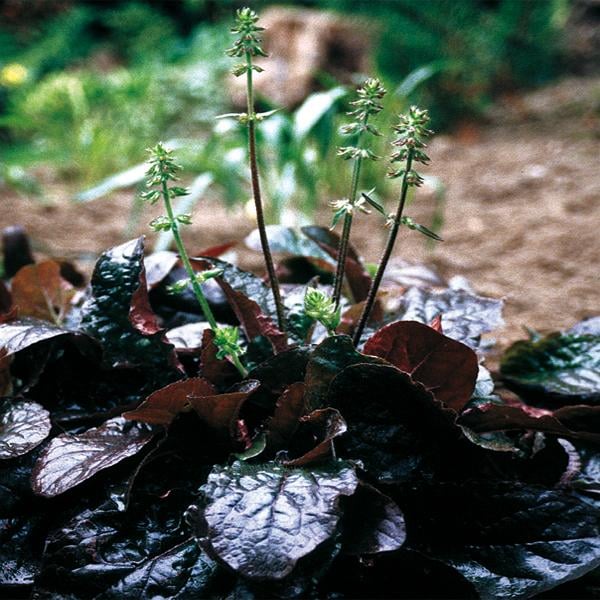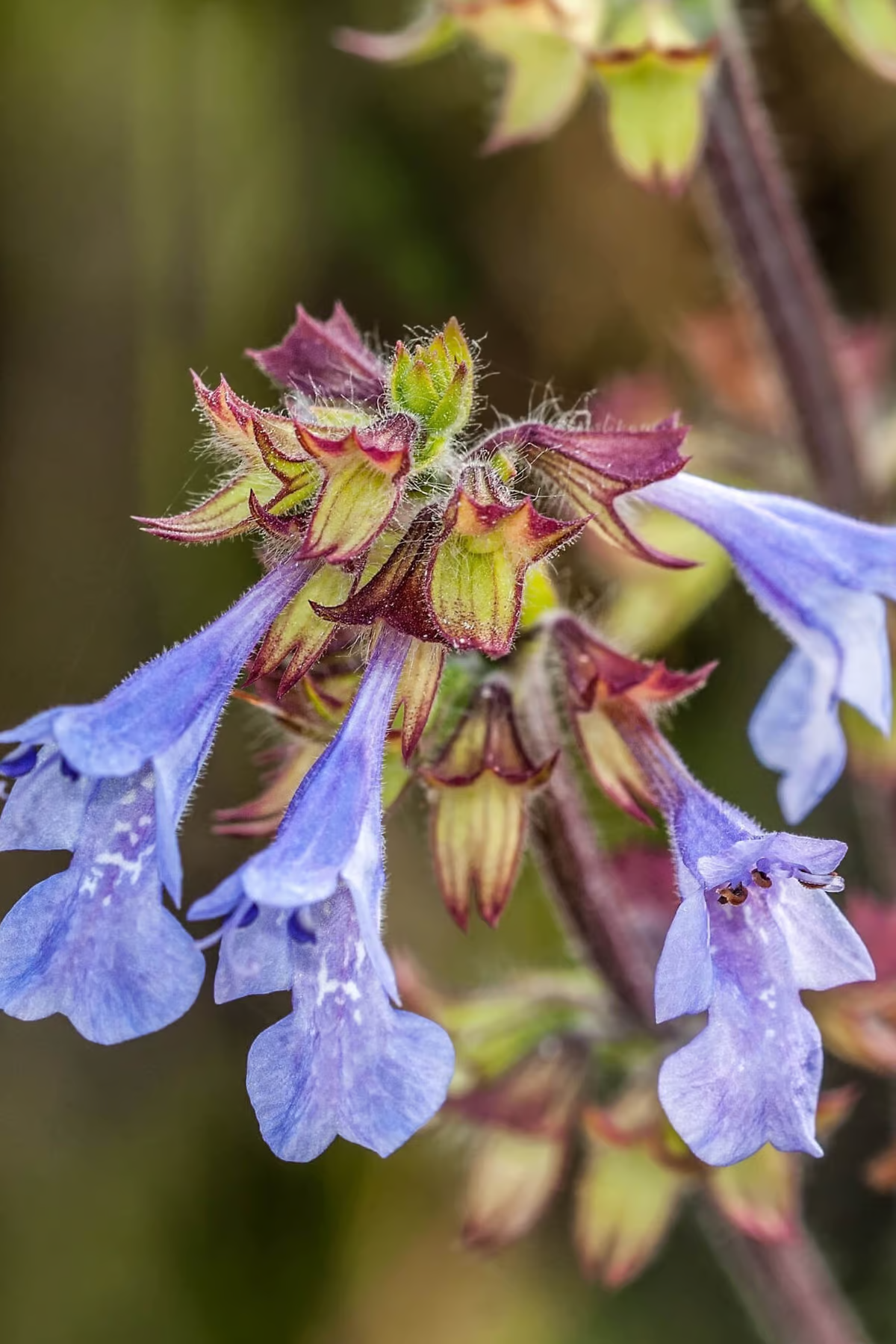



Lyreleaf Sage
Drought-tolerant and low maintenance
Grows well in shady areas
Deer-resistant and hardy plant
Thrives in
ZONE 5ZONE 6ZONE 7ZONE 8This plant ships:
Ships Week of May 19th1 Year Guarantee on all plants
Lyreleaf Sage - Salvia lyrata
The Lyreleaf Sage is a remarkable plant native mainly to the eastern and central United States, and west into Texas. It is a highly adaptable plant common in gardens but interestingly, it can easily spread into lawns. The hardy plant thrives despite being mowed and walked on, making it a great, native alternative to the typical turf grass of lawns. It is a robust self-seeder, helping it spread quite far despite its more moderate growth rate. The whole plant is edible, and is particularly tender when young. The leaves have a delicate mint taste, and can be used to make tea, or cooked alongside any similar herbs.
Plant Details - Lyreleaf Sage
Family: Lamiaceae
Light Requirement: Full sun, Partial shade
Height: 1-2 ft
Spread: 1 ft
Growth Rate: Moderate
Soil Preference: Well-drained
Bloom Time: April - June
Flower Color: Purple, Blue
Wildlife Value: Pollinator friendly–bees and butterflies
Notable Characteristics - Lyreleaf Sage
The Lyreleaf Sage gets its name from the lyre-shaped leaves which appear as large, basal rosettes. The plant is easily identifiable, even when not in bloom, because of the irregular edges of its leaves, and the deep purple-brown markings along their middle. The square stem is sturdy and upright, covered in hairs, around which the flowers are arranged in whorls, forming a terminal spike. The flowers’ sepals, which protect the bud before blooming, are equally distinct. They are purplish-green, hairy, and fused to each other, with the tubular flower emerging from their meeting point. The blossom itself is slightly trumpet shaped, with a longer, lower lip extending out. This provides an easy landing place for pollinating insects.
Landscape and Maintenance
This mint-family member is typically a roadside flower, found at the edge of woodland areas, along highways and roads, or in fields. The Lyreleaf Sage prefers well-drained, loose and sandy soil, and can reseed readily with regular watering. It tends to prefer areas with full sun or partial shade, but will tolerate a number of climatic conditions in its native habitat. Its showy purple-blue blooms are a beauty during the spring, and the evergreen foliage provides a gorgeous blanket of green in every season.
This Is How Your Plants Will Look upon Delivery

Bloom Season
Summer
Bloom/Foliage Color
Blue
Height at Maturity
Under 12"
Care
Lyreleaf Sage thrives in well-drained soil and benefits from regular watering during dry periods. It is a hardy perennial, so pruning back old stems in late winter or early spring encourages new growth. Additionally, mulching helps retain soil moisture and suppresses weeds.
Plant Reproduction
Lyreleaf Sage spread by reseeding in loose, sandy soil or by root division
Shipping date depends on the date displayed and chosen when you order from the product's page.
We only accept returns on plants verified dead. If you think your plants have died, we offer a 1 year warranty, please use this File a Claim Link to verify dead plants and start with return warranty process.






Unique Leaf Shape:
The distinctive lyre-shaped leaves add a unique and attractive element to any garden.
Pollinator Attraction:
The bright blooms attract bees and butterflies, supporting a healthy garden ecosystem.
Vibrant Purple Blooms:
Lyreleaf Sage produces striking purple flowers that add a burst of color and elegance to your landscape.
Versatile Use:
Ideal for borders, containers, or as a focal point, Lyreleaf Sage adapts well to various garden settings.
Caring Tips
How do I care for my Lyreleaf Sage?
Each box contains detailed care instructions and information about your product. But here's the basics.
Care Tips
Lyreleaf Sage thrives in well-drained soil and benefits from regular watering during dry periods. It is a hardy perennial, so pruning back old stems in late winter or early spring encourages new growth. Additionally, mulching helps retain soil moisture and suppresses weeds.
Light Requirements
Lyreleaf Sage (Salvia lyrata) thrives in partial to complete shade, making it perfect for woodland gardens or shaded areas. It prefers dappled sunlight or filtered shade, where it can flourish without the harshness of direct midday sun.
Hardy Planting Zones
5 • 6 • 7 • 8
Header
Use this content to share information about your store and products.
Frequently Asked Questions
How often should I water my plants?
How do I know if my plant is getting too much or too little sunlight?
What should I do to prepare my plants for winter?
What are the signs that my plant needs fertilizing?
How can I prevent pests from damaging my plants?
How do I choose the right plant for my climate zone?






